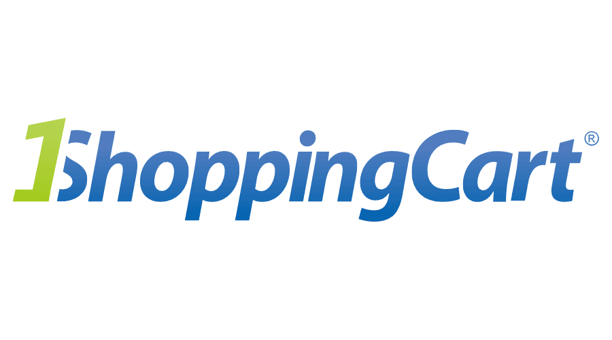
If you’re wondering what options you have and are maybe feeling a little lost on how to grow your website, start here. We have compiled a comprehensive list of activities that will provide you incremental growth over time.
That is, one activity done once is not enough. Many small activities done over a period of time will make a significant difference and needn’t break the bank. And because this is a resource that should be in continuous use, you may wish to bookmark this article.
This article is separated into several sections, which you can use individually or browse at your leisure.

Create A Startup Profile
This should help to build a foundation of backlinks which you can develop over time. Search engines like websites which have lots of backlinks as this suggests they’re important.
These websites allow you to either register a profile or engage with the community. It will probably not serve to increase traffic immediately, but backlinks will help the traffic flow in the future.
Get Someone Else to Do It
Here are a couple of sites that submit your website on your behalf, but they’re not free (you can always do it manually — and it doesn’t take that long).
Do it Yourself
Product Hunt — Being featured on Product Hunt’s front page could be a great opportunity to create a buzz around your site. Introduce your site to a community that is looking for the next AirBnB or Uber! Check out this guide for more information.
Reddit — Reddit is essentially a forum with a wide variety of categories, so before you post you should consider the following:
1. Decide which Subreddit is most relevant
2. Post high-quality content. Focus on quality, not quantity. Reddit users will not hold back to let you know if your post is less-than-stellar.
For more on how to market using Reddit properly, check out this guide:
- Make Use Of
- CNET
- Beta List
- Killer Startups
- AlternativeTo
- Crazy about Startups
- Startup Ranking
- Trust Radius
- Random Startup
- Crunchbase
- Angel List
- Startup List
- Launching Next
- Startup Tabs
- Captera
- Builtwith
- Discover Cloud
- Maqtoob
- Idea Square
Search Engine Optimisation
SEO is the process of improving the ranking of your website in search engines such as Google.
Sitemaps — By creating a sitemap for your website, you help search engines understand the layout of your site, location of product pages etc. You can create your own sitemap at xml-sitemaps.com. Once you’ve created it, add it to your root domain so it will be visible at http://ift.tt/19smCB5
Robots.txt — A robot.txt file helps search engines understand which pages not to index (add to the search results) such as login, backend or technical pages. Create yours here: http://ift.tt/1LftC6S make sure to add it to your root domain so it will be visible at http://ift.tt/1mgHpHd
Analytics — By watching how people arrive and interact with your website, you’re able to make changes and improvements. We’d recommend you install Google Analytics, it’s easy to install and comprehensive. The only issue is that it can be a little complex, so here’s a guide.
Webmaster Tools — Whilst Google Analytics allows you to understand how people interact with your website, Google Webmaster Tools will tell you how Google interacts with your website. It can identify and list any problems (and some awesome stats). Check it out here.
Growth Hacks
Growth hacks are techniques that can help you to grow your business. Some companies do this very well, for example AirBnB who brought their initial users using Craigslist. Check out their story here.
Leverage dead competitors — Your competitor exiting the market is good news in more than one way.
1. Create a page full of content (and why you’re better) on your website about them. This way, you may start ranking for their company when people are no longer able to find them when searching.
2. Search their name and find websites that list them, then ask those websites to list you as a replacement.
Competitions — Run competitions via email and social media to raise awareness of your company. For example a giveaway for people who use a particular hashtag on Twitter, or perhaps give something to everyone who refers a friend. These guys make it easy.
Newsletter — A company newsletter that is sent out to your customers serves two purposes: First, it creates a ‘top of the mind’ awareness of your brand and it can also incentivise them to purchase from you in the future. Not sure where to start? Consider using tools like Mailchimp. Keep in mind, your customers get plenty of emails on a daily basis. They can hit that “Unsubscribe” button or worse, have a negative association with your brand. Make it worth their while to read your newsletter.
Blogging — Blogging is an activity that many startups are now employing. Having a regular, high-quality blog can help bring more customers to your company and raise awareness of your brand. Additionally, it can help your brand rank well in search engines.
Call to Action — A CTA (Call-to-Action) is an instruction that requests the reader to do something. Although this isn’t a marketing activity in itself, it is something that many companies overlook. When publishing a blog article, or piece of content, always try to encourage the reader to do something. This could be to sign up to your brand, or share an article.
Here’s our homepage CTA

Guest Posting — Guest posting is the act of publishing articles on other blogs. This synergy helps drive potential customers to your brand and raise awareness. By offering a piece of high-quality content to other blogs, you can stand on the shoulders of giants as their blog may have many more visitors than your own, and also gain a solid backlink to your website. Check out our article here.
Content Reproduction — The Skyscraper Technique is a method of raising awareness of your brand and reputation by replicating existing content, improving it and then republishing it. Here’s how you do it:
1. Go to a forum (or Google) and search for relevant terms
2. See what comes up
3. Locate a good article
4. Rewrite it, improve it or add more value
5. Publish it and promote on the same sites that link back to the original article
Drip Email Campaign — When potential customers visit a website such as an ecommerce store, they don’t always sign up immediately. Sometimes they may want to think about it before they decide to sign-up or buy.
One good way of ensuring a customer doesn’t forget about you during this time, is by creating a drip email campaign. This is when a customer enters their email address in order to receive some sort of information. For example, you may sign up to a health website which offers a drip email campaign on ’10 Things You Can Do to Lose Weight’. For basic drip automation, you can use a tool such as Drip or some email platforms offer more advanced tools.
A/B Testing — A/B testing (sometimes called split testing) is comparing two versions of something to see which performs better. For example, at Shoprocket, we test the copy, colours, buttons, pictures and website structure to see (and measure) what effect that has on engagement (clicks) and sign-ups. The aim of A/B testing is to send the same type of people to each page, otherwise, your results will be skewed. To do this we use, Optimizely.
Landing Pages — A landing page is a single webpage which generally contains some sort of information capture form. You can see an example here. The advantage of these kinds of pages is that they often have high conversion rates (a lot of the people who sign up, end up adding their details). Here’s a guide on creating a [great landing page](http://ift.tt/17OgW0L ).
Webinars — Webinars are online video presentations. Some people such as Hubspot used them to demo their platform, others use them to offer customer service. Whatever you use it for, if you do it correctly, it can help build a relationship with your viewers. I’d recommend Google+ Hangouts.
Attending Industry Competitions — Competitions provide an excellent method of building credibility and raising awareness of your brand. Simply keep an eye out on relevant trade publications and search on Google occasionally.
Commenting on Blogs — Leave relevant comments on blogs, although this is becoming an increasingly outdated method of link building, it can help you generate links to your website and if your comment is insightful, it will encourage people to click on it.
Public Speaking — Speaking at events can also help to raise awareness of your brand, build up credibility and potentially encourage sales. Start small by contacting low profile events via Meetups and as your skills and content increases take on larger events.
Run events — Alternatively, you can also achieve the above by running events yourself. For example, Shoprocket will be running a monthly eCommerce developers Meetup in London shortly.
Answer Questions on Quora — Quora is a fantastic question and answer service that I use all the time. You ask a question — any question and someone answers. There’s been some really high profile answers which are part of the reason that they receive millions of hits. A great way to build credibility and traffic is to offer high-quality answers.
Trade social media posts — Speak to relevant organisations and ask to trade Tweets and Facebook posts.
Watch for mentions — Keep an eye on brand mentions around the web with Google Alerts and Mention. Get a notification whenever it finds particular keyword (such as your company’s name). Or stalk your competitors.
Engage with PR — Engage with PR more effectively by using services such as Help A Reporter Out or Twitter’s hashtags: #journorequest and #prrequest.
Personal Emails — Try sending out handmade personalised emails to your customers, asking them to refer you to anyone who may benefit from your product or service. Simple but effective.
Competitor Comparison — Create a competitor comparison page to show how your product is better than your competitors. Be careful with this one, because if done wrong this could result in you sounding arrogant. Also, if your customer has no knowledge of your competitor, you could lose your customer to a rival!
Post on Slideshare — Create presentations (try using existing content as inspiration) and upload to Slideshare. This can help to increase brand awareness and get some backlinks.
Email Signatures — How many emails do you send per day? I bet it’s a lot. Don’t forget to add your website to the signature of your emails, try this site.
Whitepapers — Create big, comprehensive and high-quality documents and share for free. If they offer good content and have links to your site, you can generate some very effective backlinks.
Use Influencers — Power YouTubers and Bloggers can have millions of followers. Leverage their influence by asking for a product review.
Social Media
- Facebook — Don’t forget to create a Facebook Page for your brand (fill out all the details and add links to your other social media profiles). Also, you can cross post good quality content to relevant Facebook groups.
- Twitter — Along with your Facebook page, Twitter can broaden your outreach. You’re not limited to 140 characters; Twitter conversation cards allows you to attach photos and videos to get your message across!
- Google+ — Create a Google+ Page (supposedly Google places higher value on websites that do this).
- LinkedIn — Create a LinkedIn page. This is sort of a business version of Facebook
Summary
This is by no means an exhaustive list, there are a huge number of different things you can do to help boost sales.
If you know of any other techniques, please let us know either in the comments or on our social media. If you liked this article, subscribe for more!






